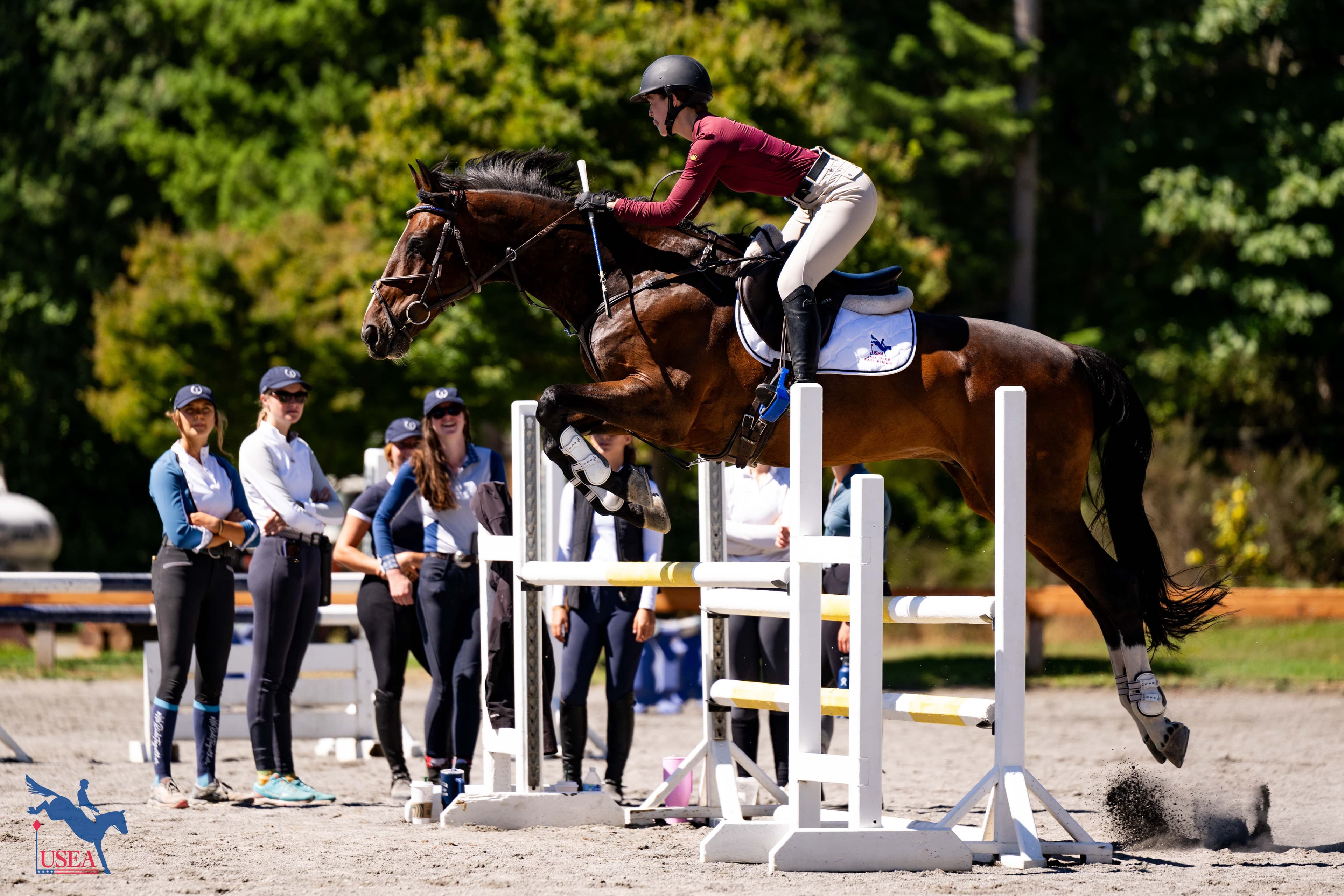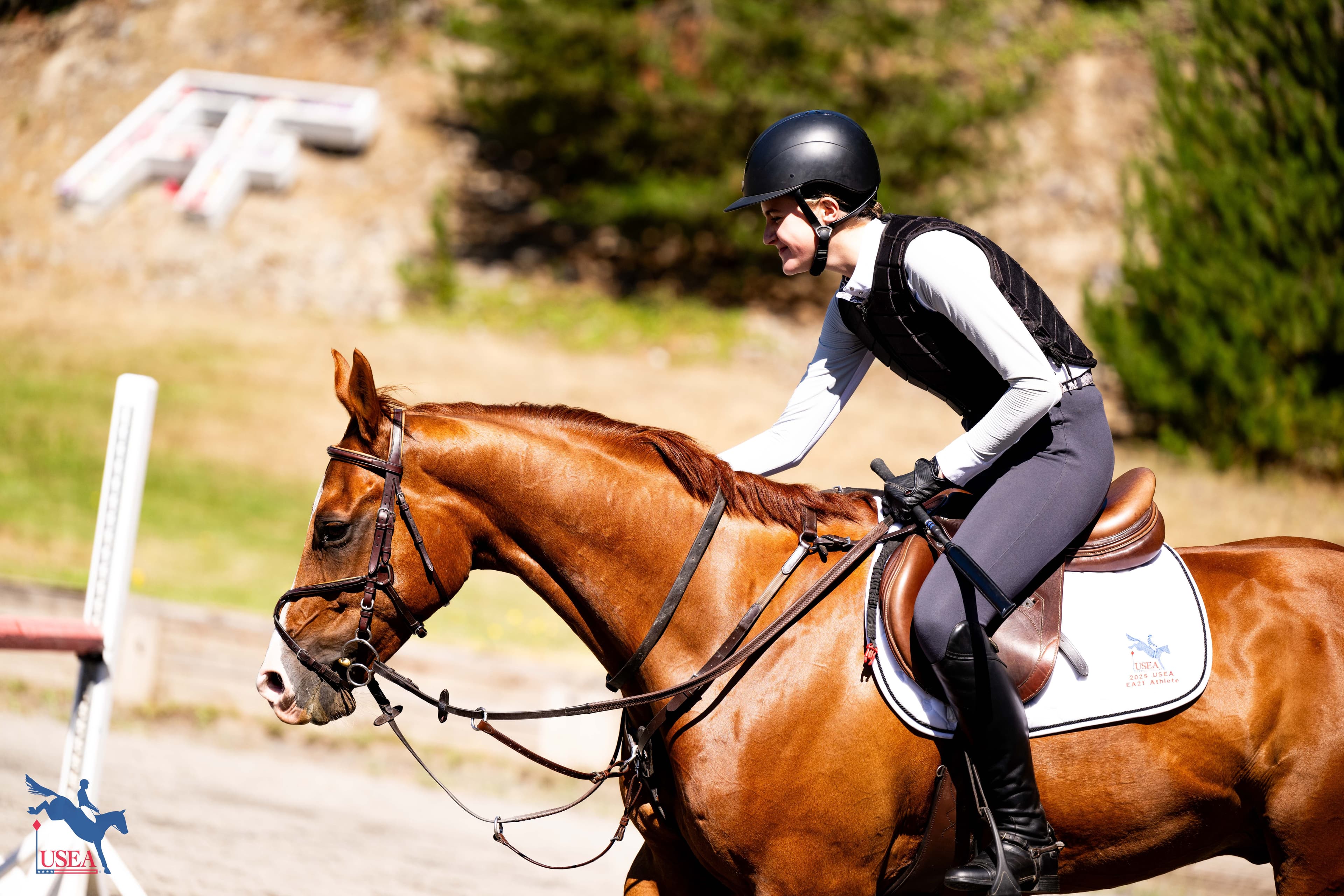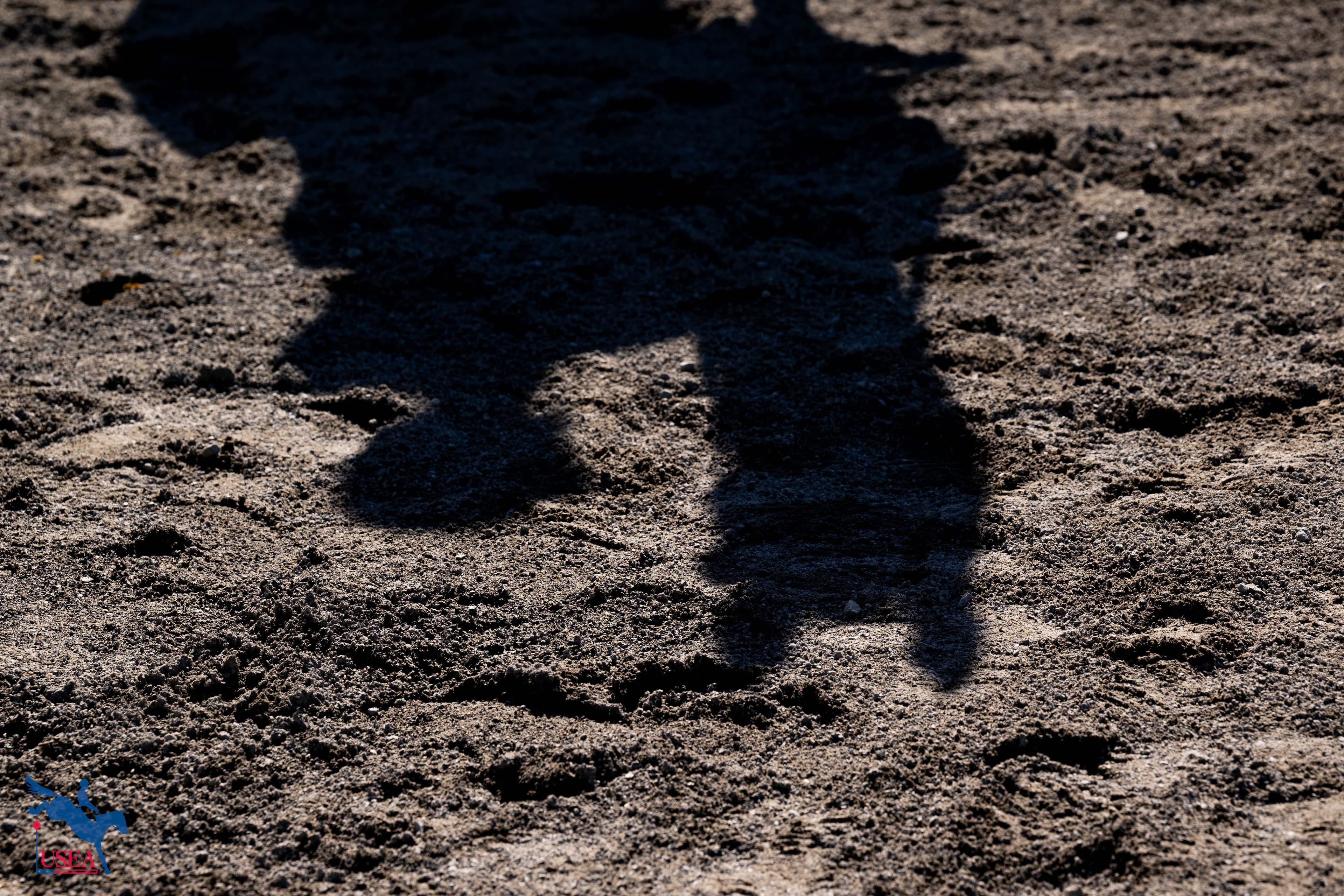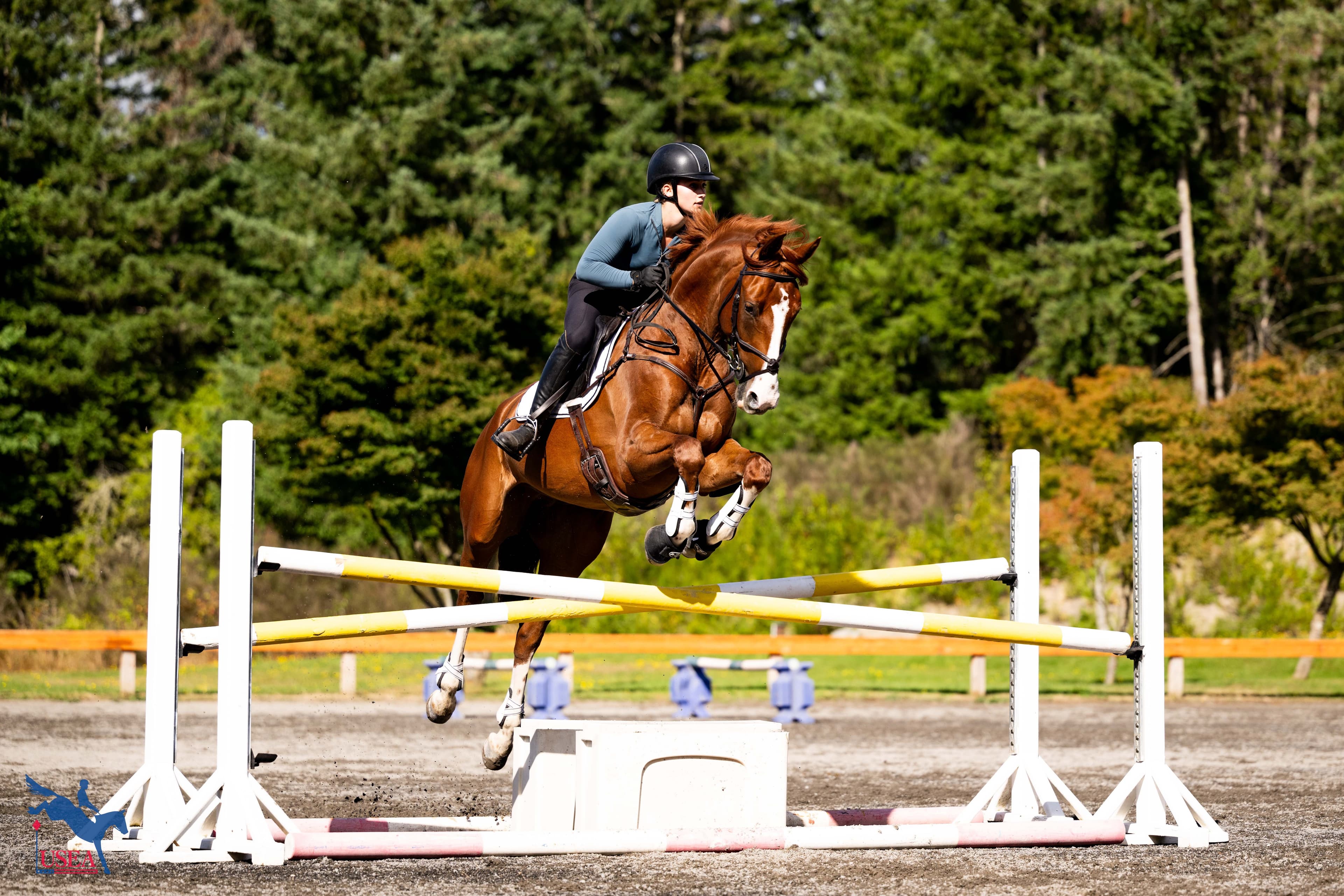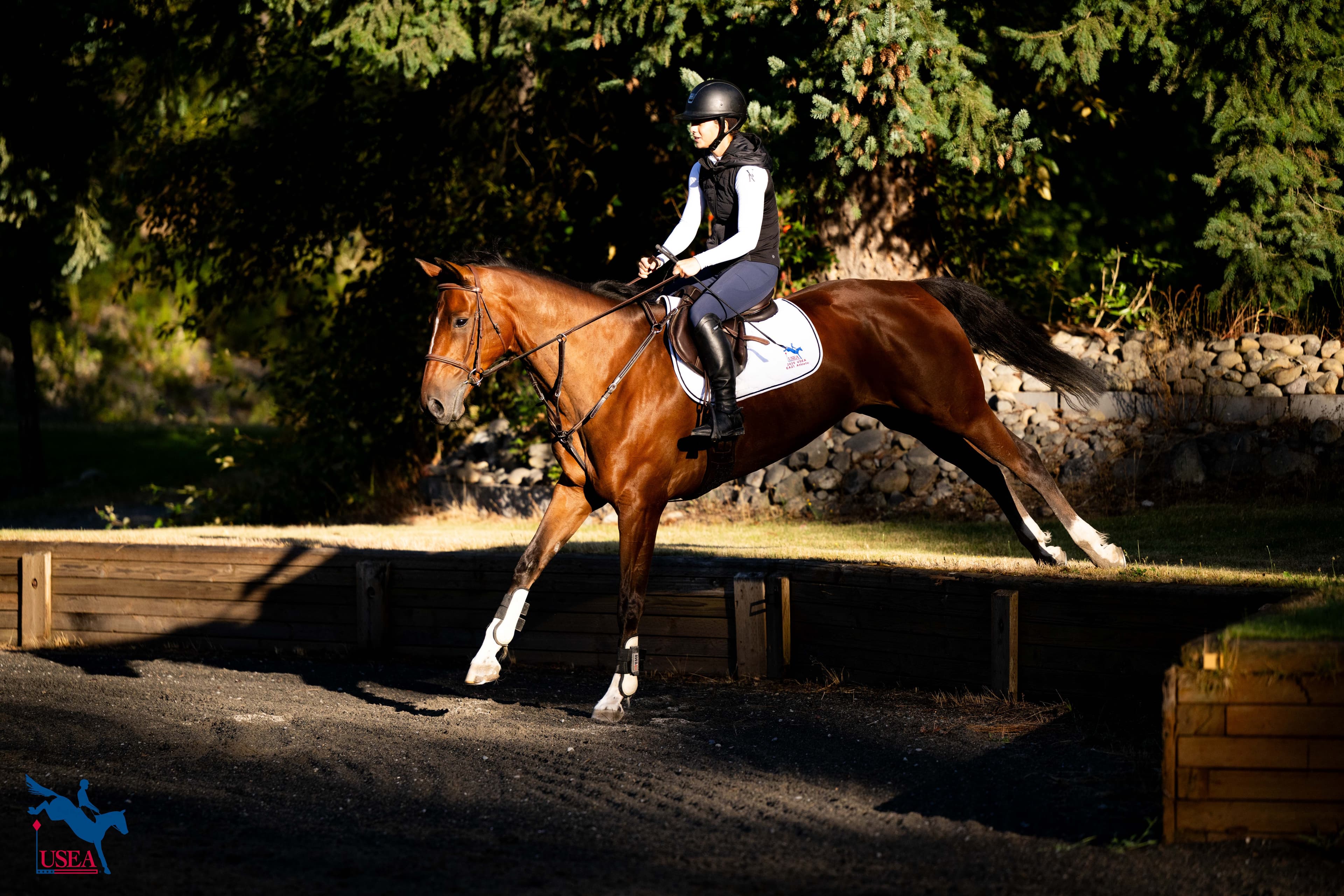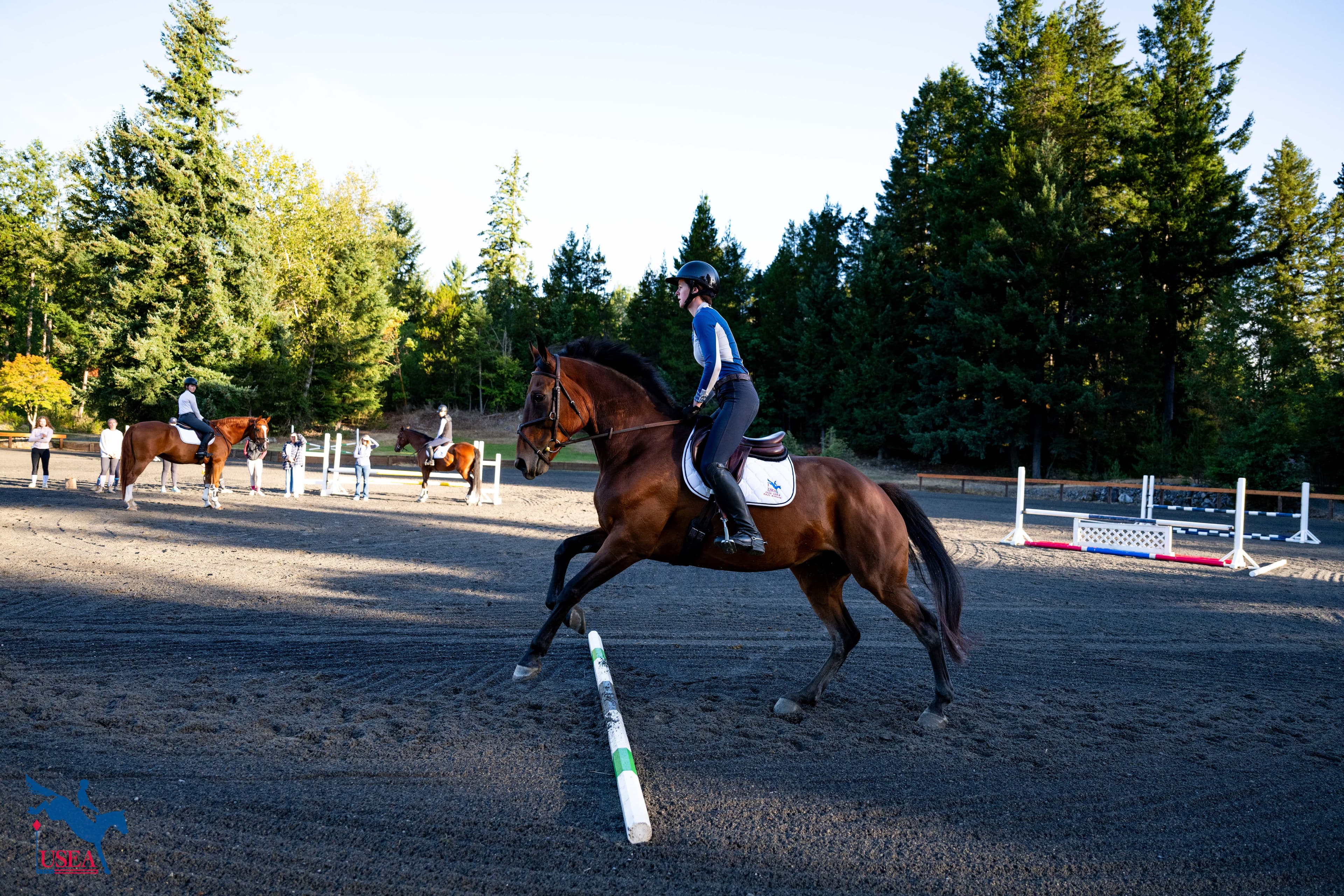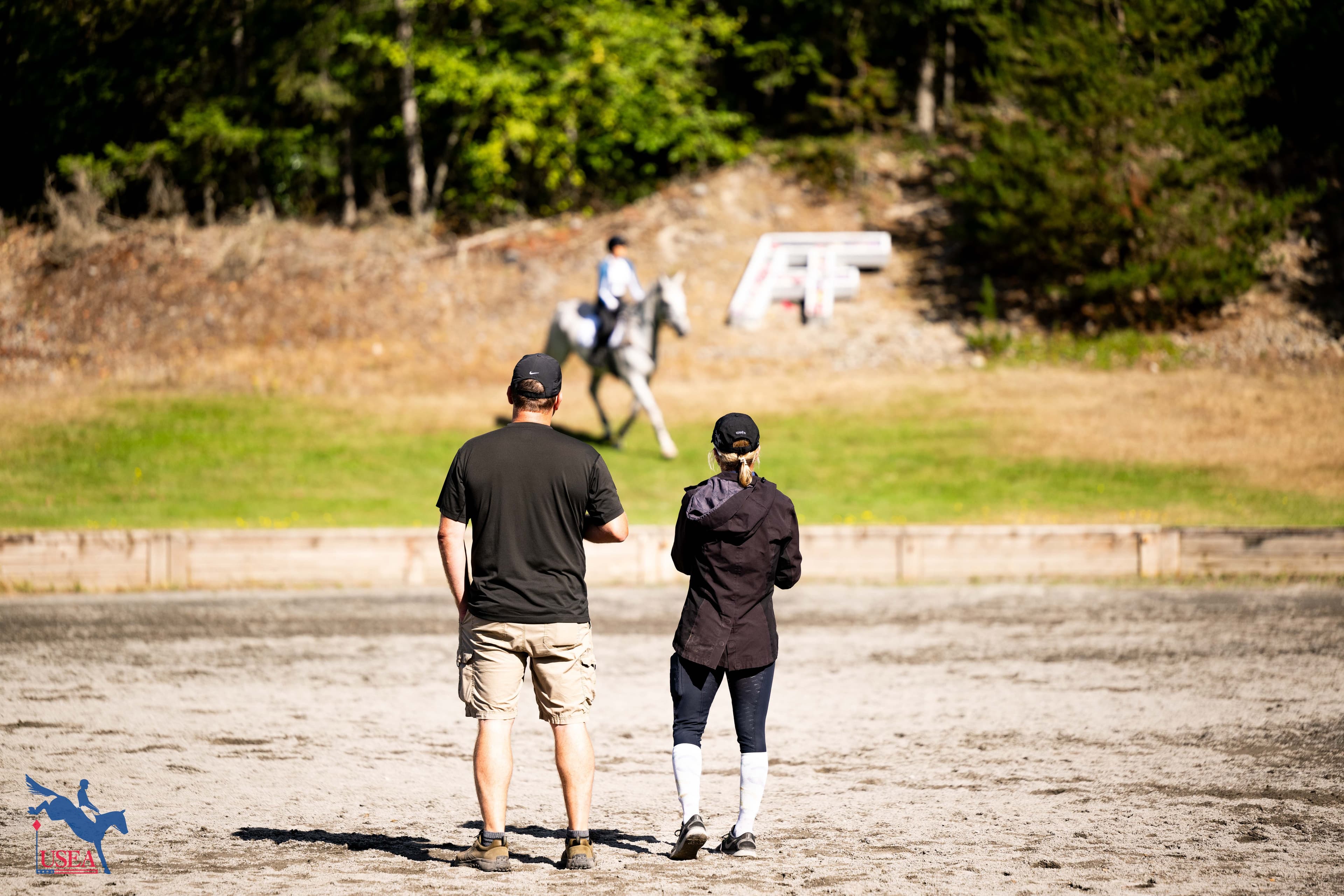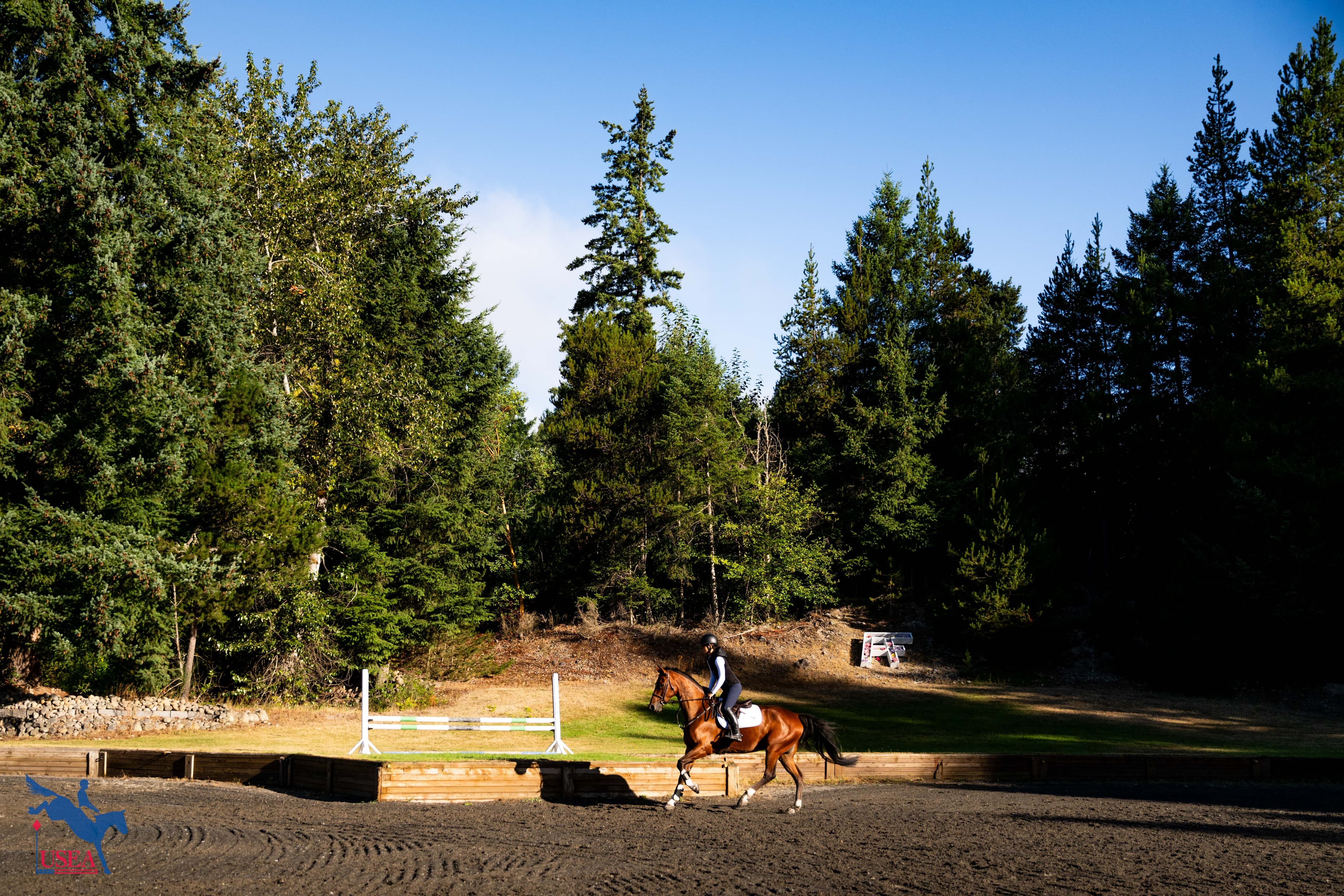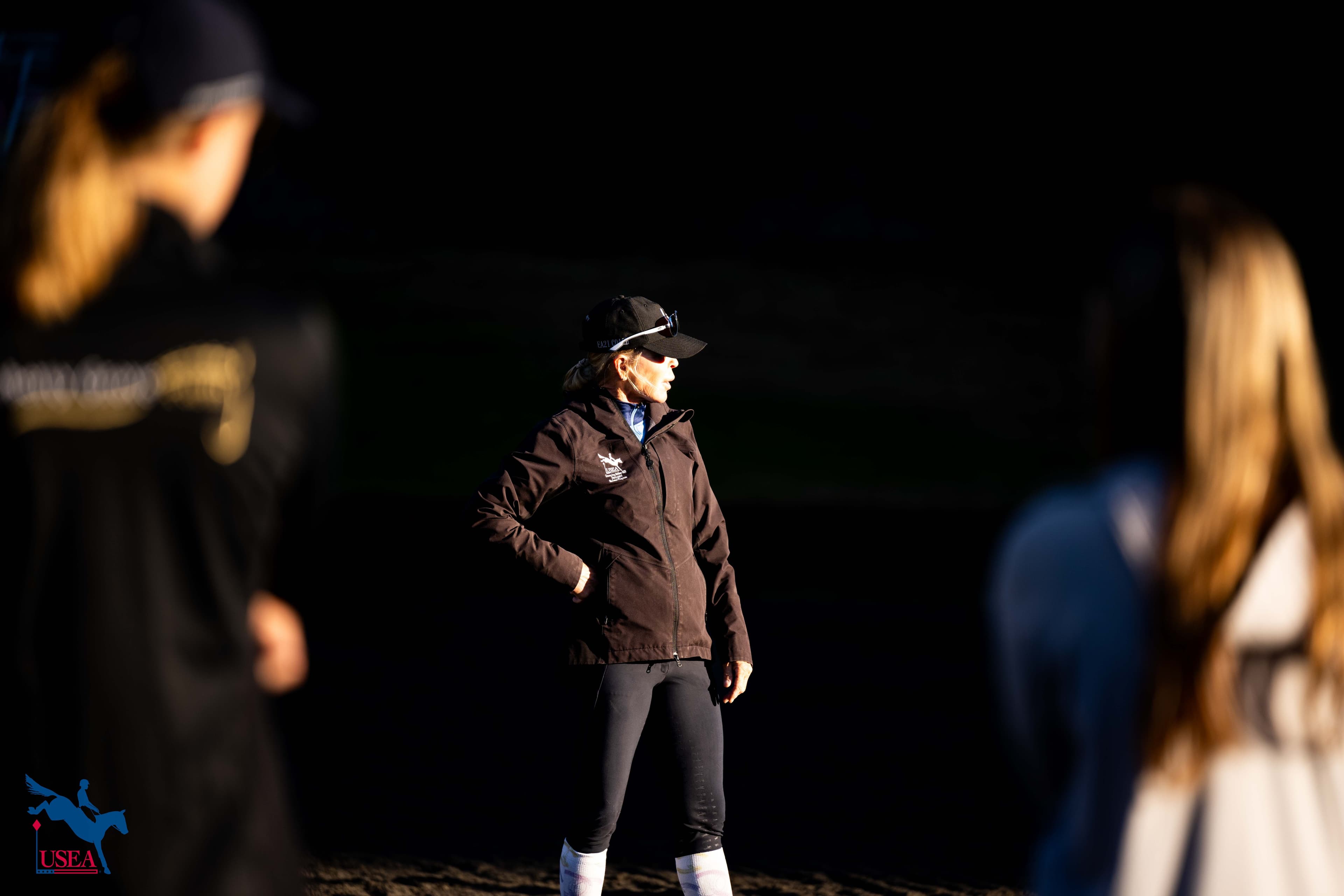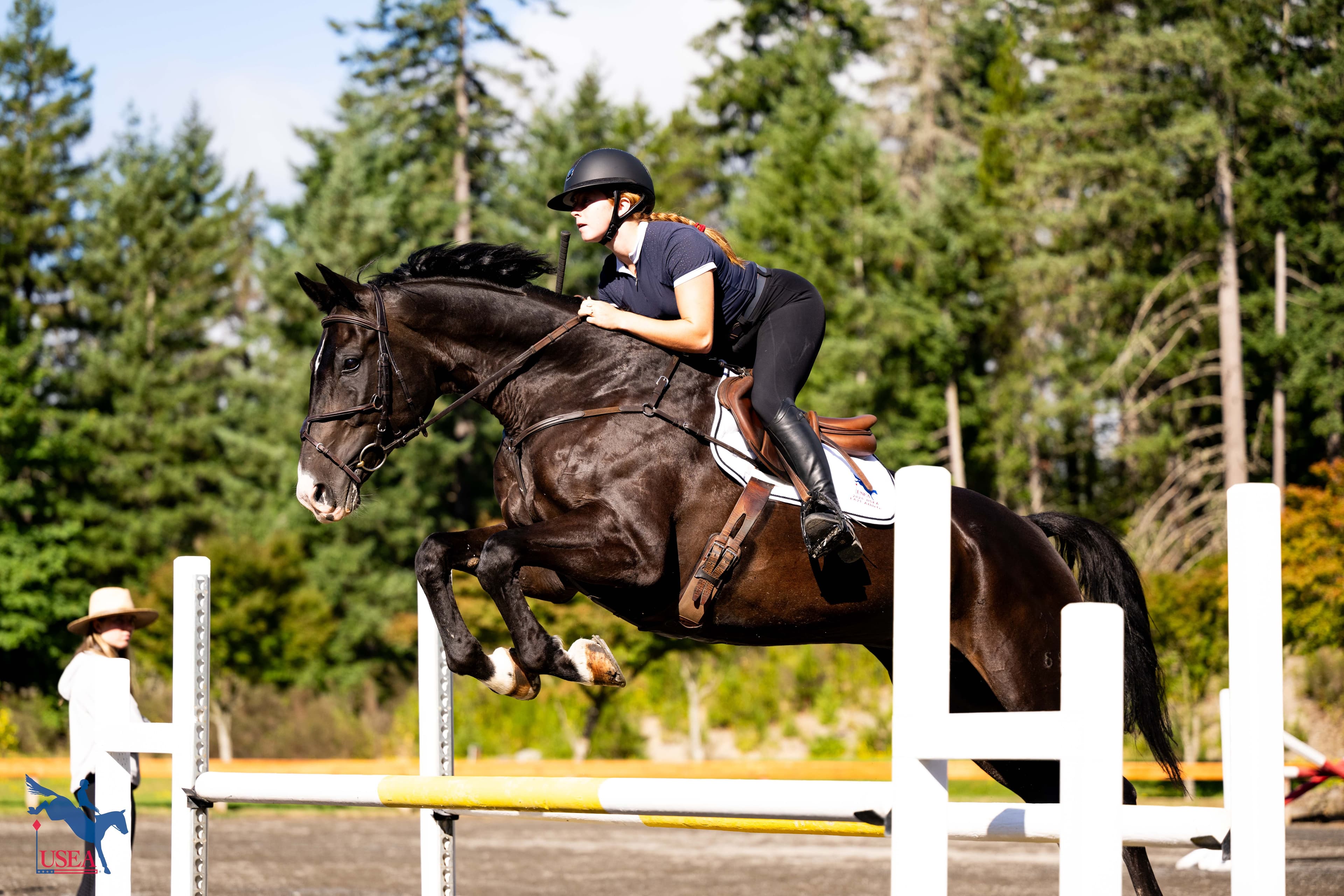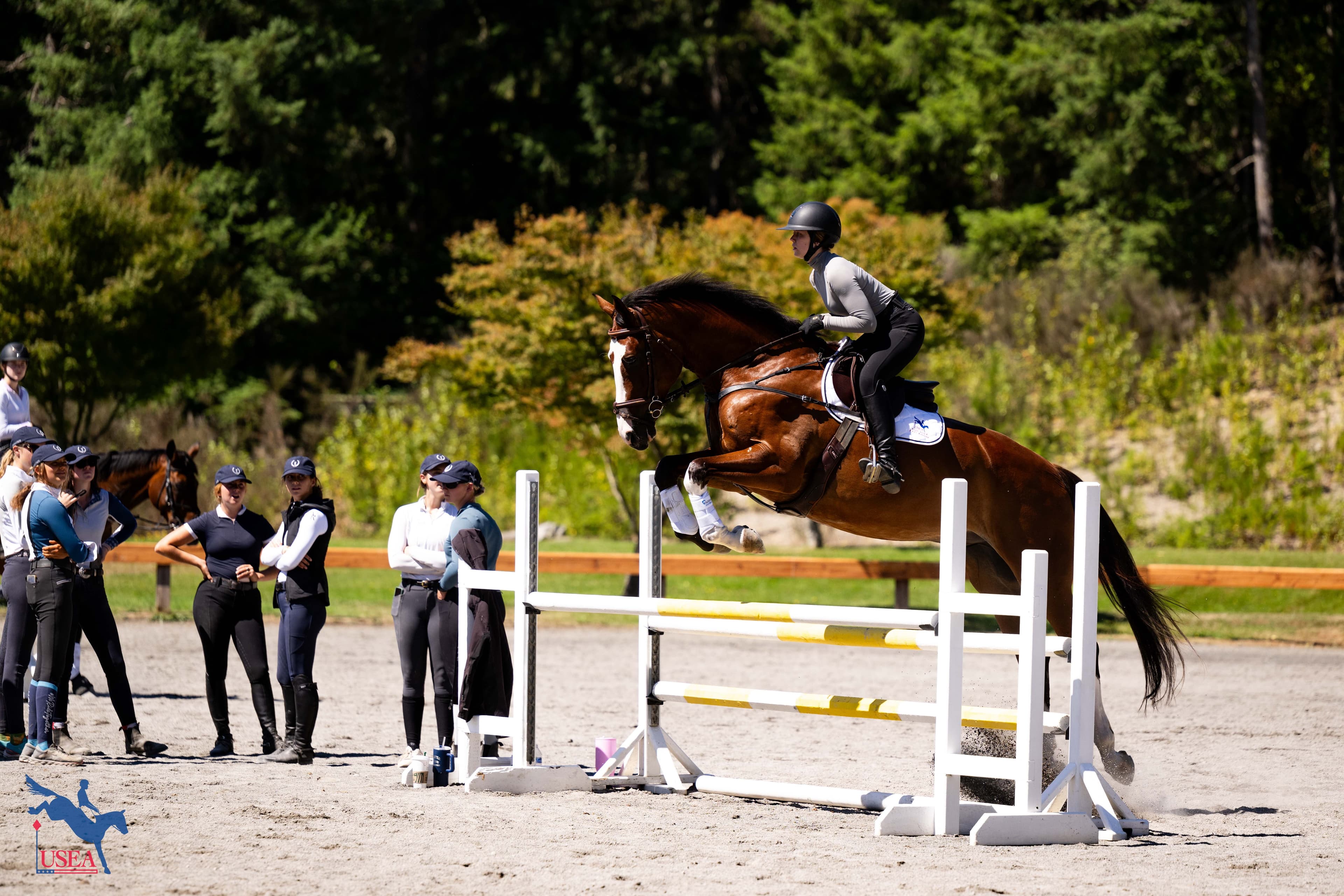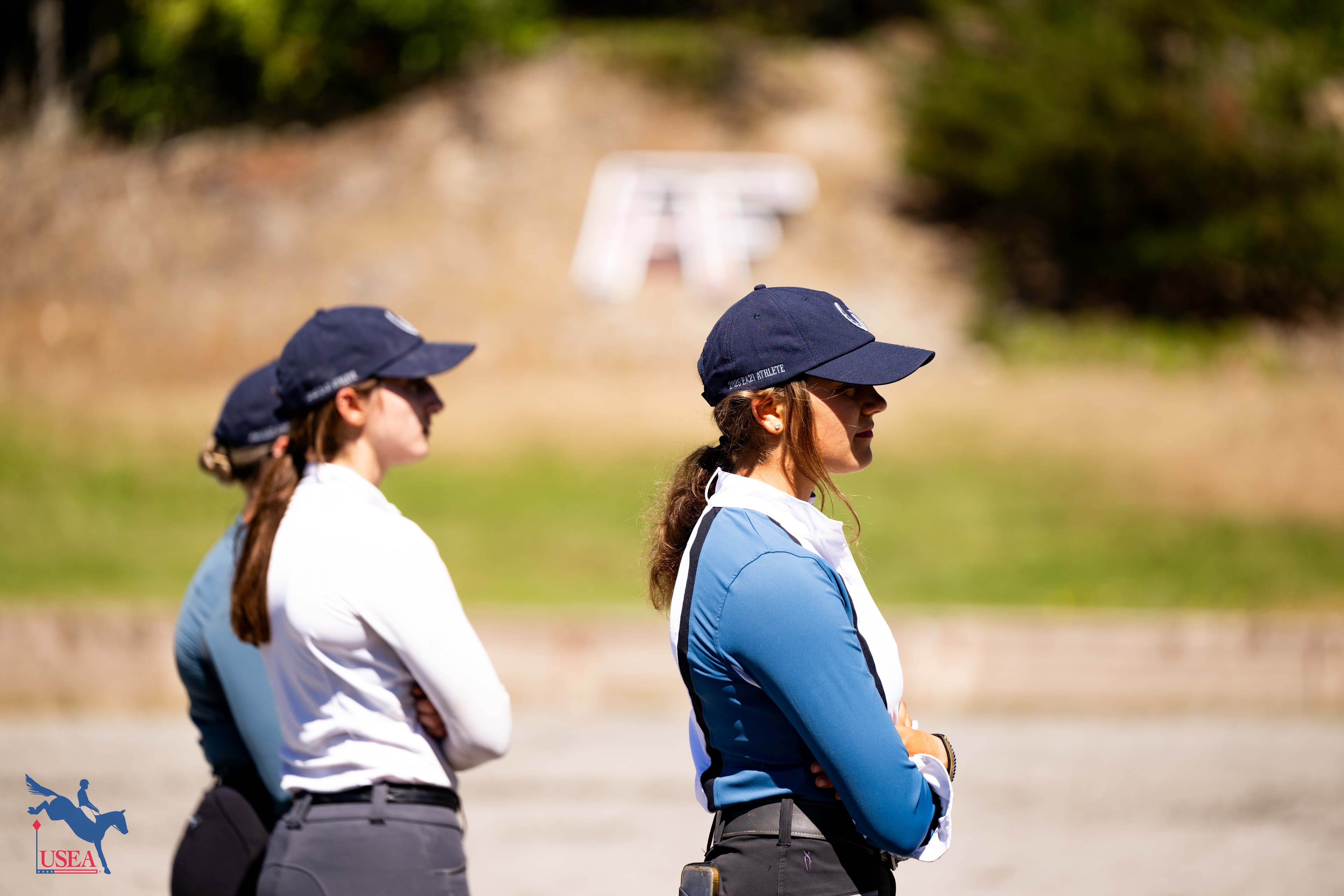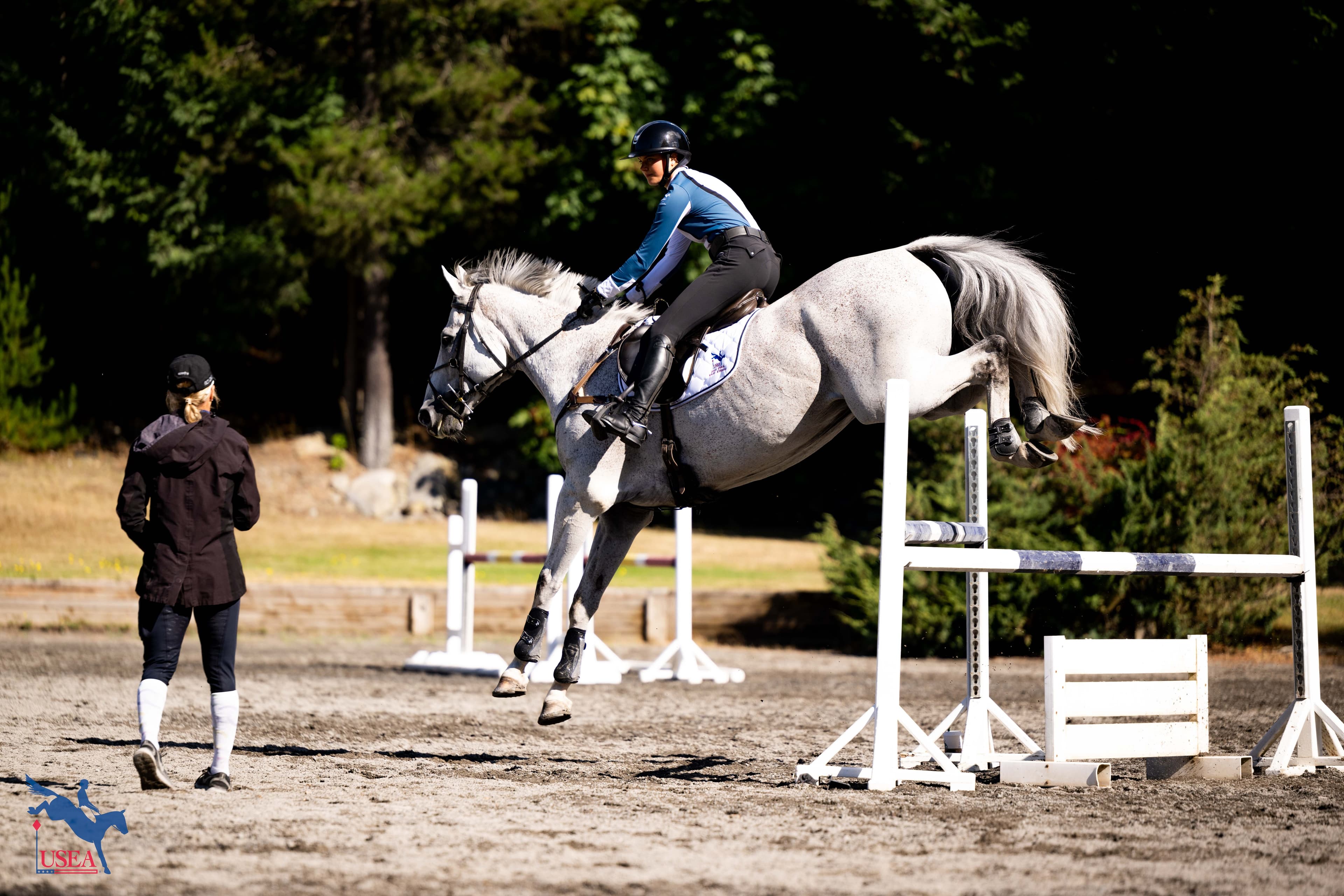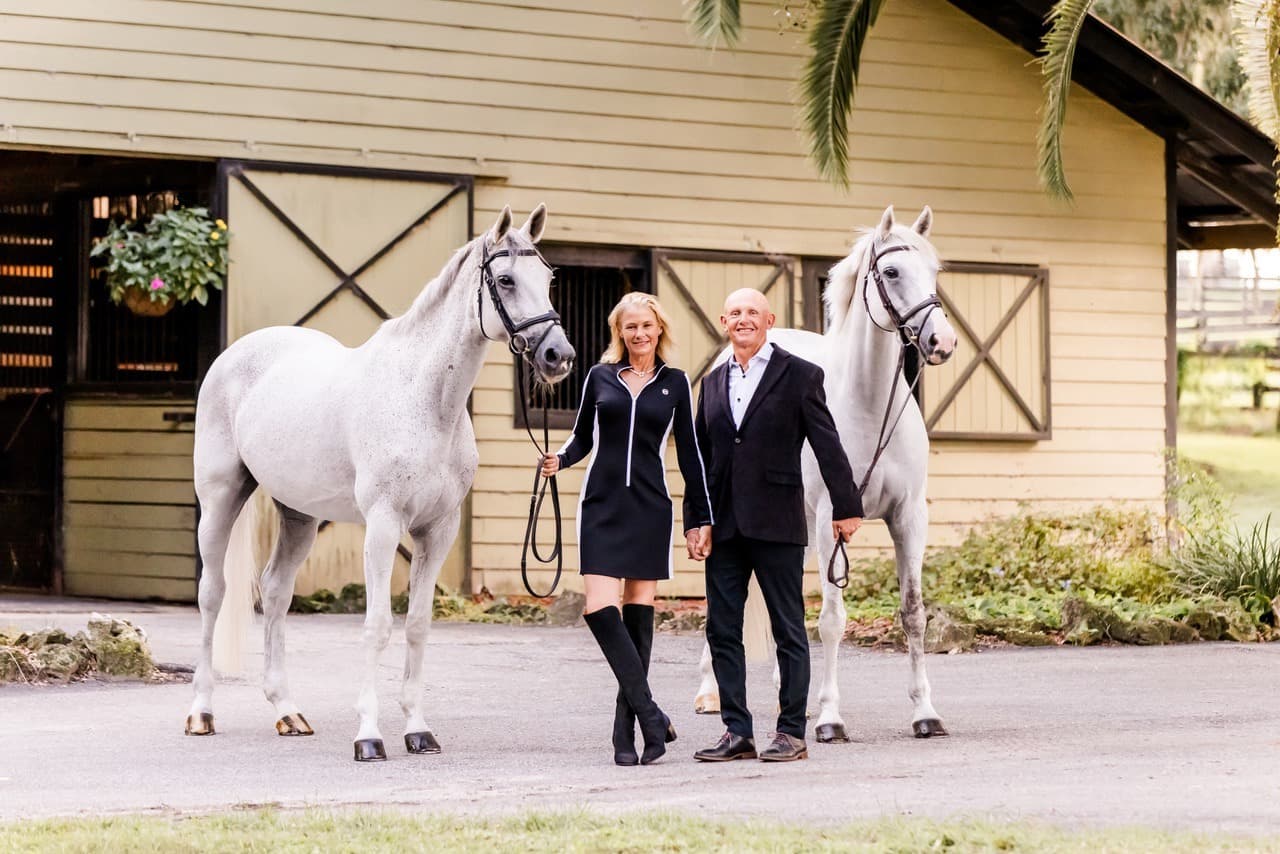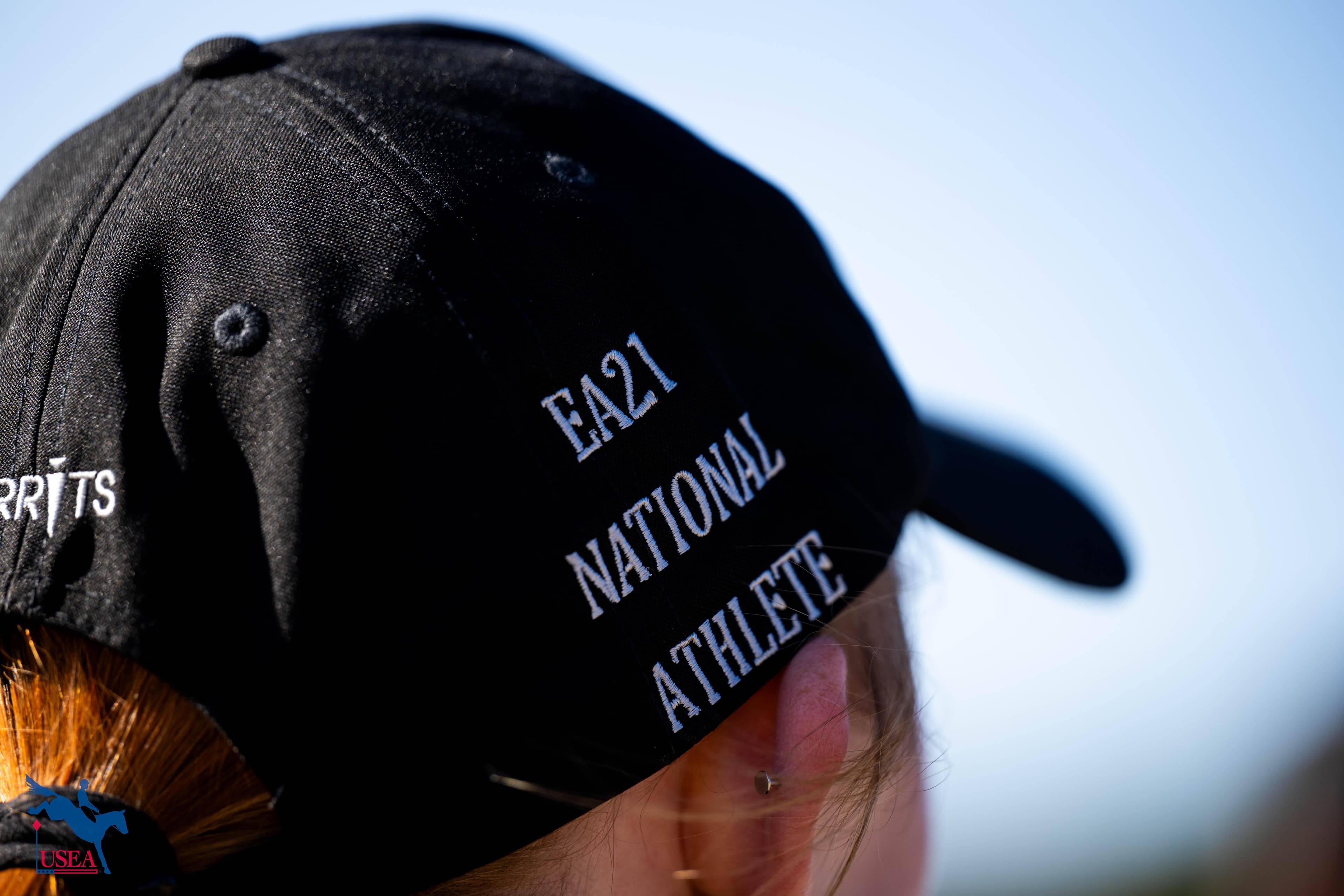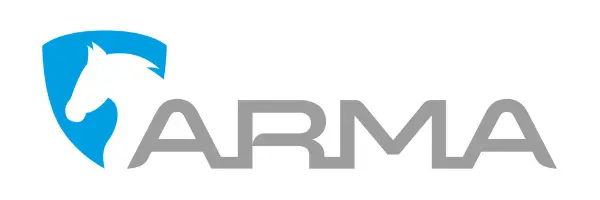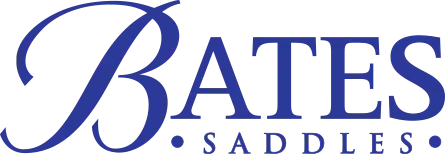Want Vs Don’t on Day 2 of EA21 West II Clinic
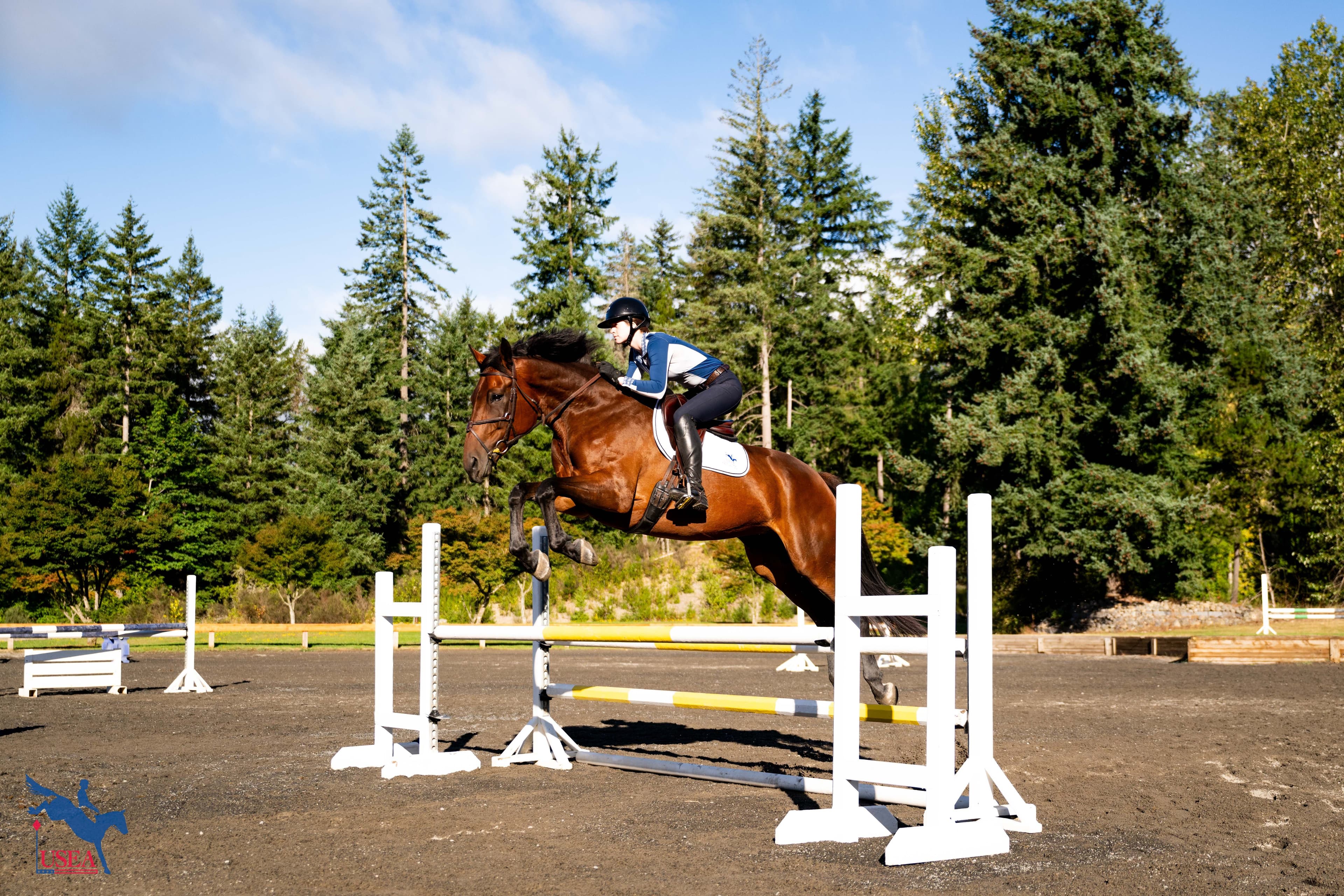
Yelm, Wash.—Aug. 13—The mind is a powerful tool. The stories we tell ourselves and the ways we view the world shape our actions in unconscious ways.
“Our brains don’t process the negative,” Jan Byyny, EA21 West II coach, said to riders on Day 2 of the clinic at Aspen Farms. “Something that’s really important as a rider is to frame what you want to do in a positive way.”
Rather than a list of all the things riders shouldn’t do, she encouraged participants to orient their thought process into positive and actionable steps. Instead of “I won’t use my hand too much,” reframe the statement to, “I will ride more from my leg.” In that way, riders could arrive at their own solutions to their problems instead of a laundry list of “no’s.” The evolution of system, in which riders could become trainers, began in their mind.
For Hanni Sreenan, that was a powerful adjustment: “I'm starting to understand that you don't necessarily have to be perfect all the time. If you have a good rhythm, it'll come, and the straightness and all of that will be there. Perfection isn't necessarily the key to everything. It sometimes makes you a little all over the place.”
As Byyny has mentioned on dressage day, learning is messy. Just like on the flat, when riders worked to find balance and rhythm without the pressure of being a perfect frame, finding a quality and powerful canter resulted in some less than perfect distances.
Starting over two poles set 72’ feet apart, she asked riders to work on their adjustability in the size of the canter step by changing how many strides they fit between the poles. She asked for anywhere between four to seven strides between them. When riders ended up on a half-step or didn’t complete the set number of steps, she said: “Don’t judge yourself. Use that as information for the next time.”
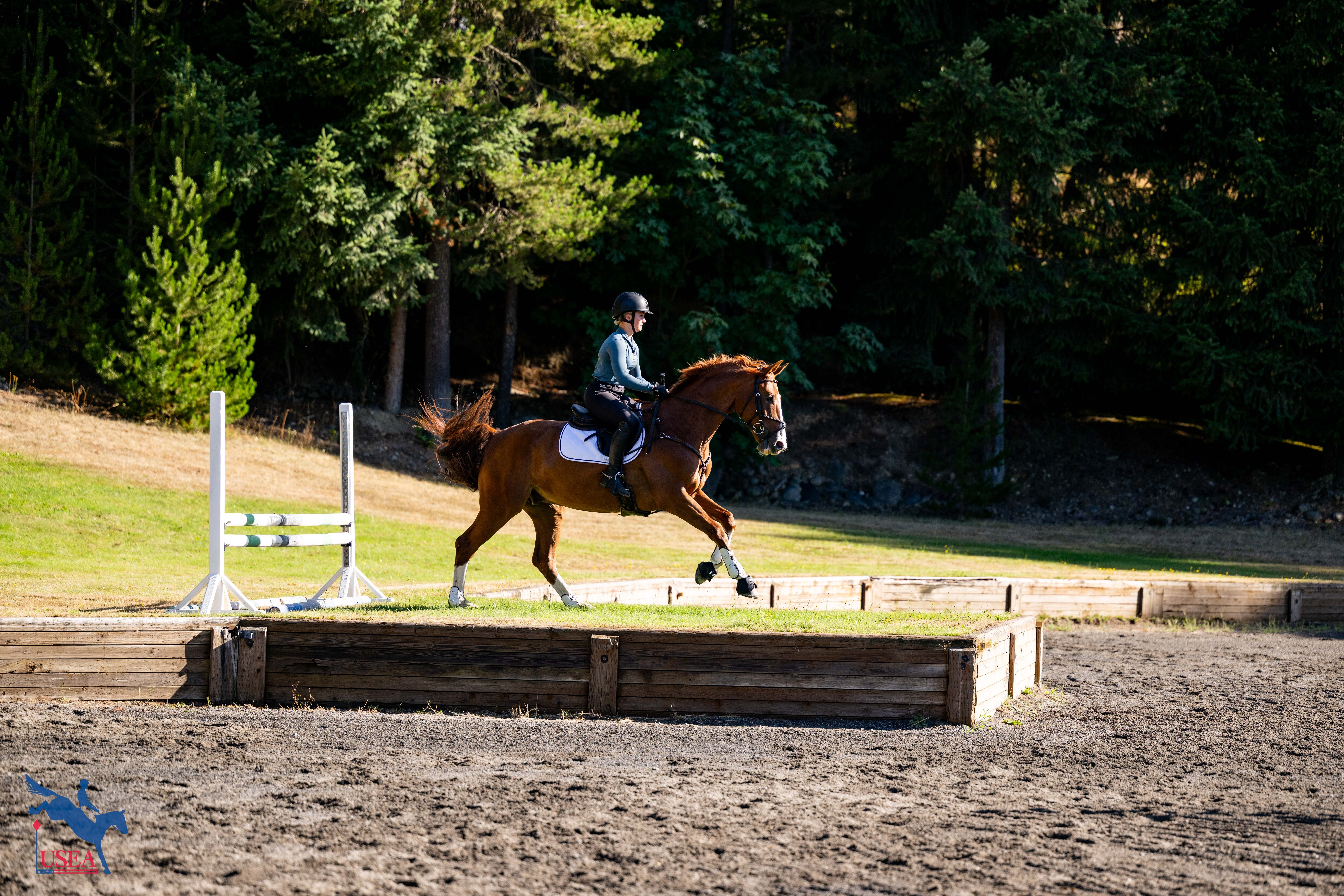
After completing the poles, Byyny began incorporating some cross-country questions into the lesson with angled jumps, a small bank with a vertical set on top on a one-stride distance, and two show jumps set as corners that could be jumping individually or on a bending line. Whether the question was more show jumping focused or cross country focused, her goal was the same: a quality canter and working through the levels of the German training scale pyramid.
For Simone Clark, attending for her third year but riding for her second, working through the levels never stops. “I feel like every year that I've ridden in this clinic, I'm literally moving up the training scale and getting better and better at every step. [This year, I learned] instead of counting my rhythm, I’m going to breathe my rhythm. I'm [also going to] change some things about my seat. It was super awesome. I'm really excited for next year already!”
Each group jumped the same elements, but their courses were slightly different, depending on the level of horse experience. Byyny made sure to explain clearly and simply why she was choosing one version over the other
That simplicity really helped Reese Blinks, attending for her second time. “You hear about ideas, you hear about principles, but you don't know how to apply them to your own riding. [Byyny] really bridged that gap on applying new ideas to your riding in a very positive way and was able to reinforce that from the flat into the jumping. A lot of the concepts she introduced were things that applied to everybody. [The exercise she gave me] was an exercise that I'll feel comfortable doing on my own. It wasn't too complicated, it wasn't too hard, and I know when I've succeeded.”
Beyond the riding, one thing that stuck out to all the participants was the mock “stick horse” ride Byyny had them do on the first lecture.
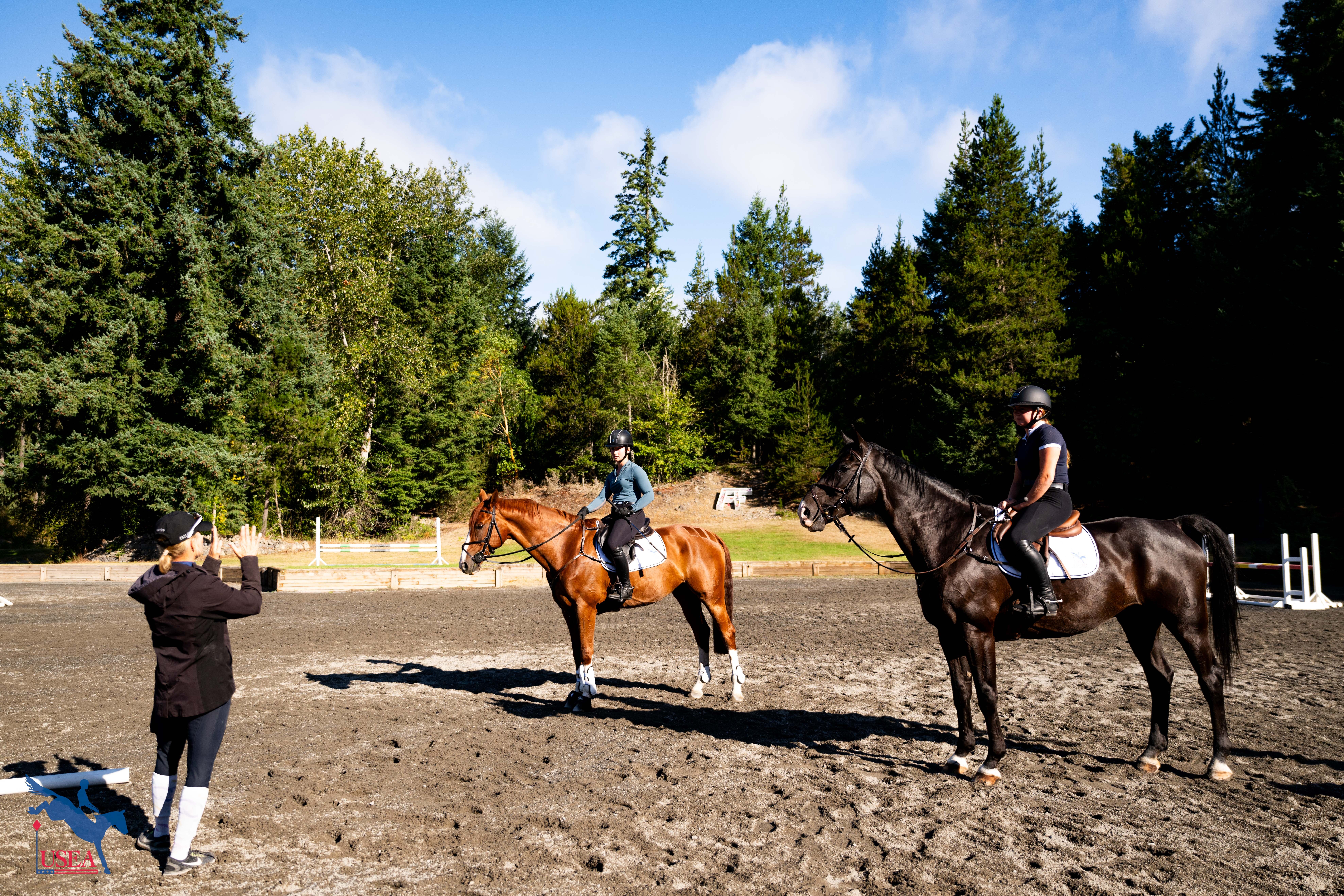
“We started the clinic off with this silly stick horse thing that we all thought was really dumb, and it turned out to be one of the best things we ever did!” Brianna Rasmussen said with a laugh. “It really helped us in the dressage work and then transformed into the jumping. I noticed how much [activity in the hips] changed how my horse went and how collected and how much he was really off my seat. [The EA21 program] is an experience that I only get so many years to try, and it's been one of the best things I've ever applied for.”
Byyny, very much a planner, could not have expected the way her ice breaking exercise would dictate the course of the two days. “I didn't realize that my stick horse idea was so helpful! It helps me, but that was really a nice way to teach them about how your body moves. But also, it was so nice, because they all said that just it broke the ice for them.”
Believing in the system is what made Byyny want to be a coach for the EA21 program: “I've trained with a lot of different people, but [David O’Connor] taught me a system that makes my riding better and the way to think. I really think having a system makes you a better trainer, rider, and competitor and giving people the tools to be able to solve their own problems is huge. All the girls, they inspire me. They were all great riders and students; so well spoken, they have a great grasp of what they're doing. Adding to their way of thinking of reiterating this training skill and the system again and again and again was still so fun. It was inspiring for me as a coach to think about and see the talent we have in this group of riders.”
West II | Aspen Farms | Yelm, Washington
The Participants:
- Reese Blinks
- Shruti Bona
- Simone Clark
- Lindsay Essex
- Sophia Greenwood
- Madyson Hsue
- Alexis Johnson
- Coco Ramkowsky
- Brianna Rasmussen
- Caterina Ritson
- Kendal Smith
- Hanni Sreenan
The USEA would like to thank Aspen Farms for hosting and on-site coordinator Kendra Zartman for her work this week, as well as coach Jan Byyny for her excellent teaching!
About the USEA Emerging Athlete U21 Program (EA21)
The purpose of the USEA Emerging Athletes U21 Program (EA21) is to identify and provide consistent quality instruction to the next generation of elite event riders. The aim is to create a pipeline for potential team riders by identifying and developing young talent, improving horsemanship and riding skills, and training and improving skills and consistency.
The USEA Emerging Athletes U21 Program was launched in 2022 with a model of five summertime regional clinics taught by carefully selected USEA Eventing Coaches Program (ECP) coaches, leading to a winter national camp consisting of selected Young Riders from the regional clinics. Athletes who are 21 years or younger, are current members of their USEA Young Rider Area program, and are established at the Training Level or higher, are eligible to apply for the EA21 program. Click here to learn more about the USEA EA21 Program.
The USEA would like to thank ARMA, Bates Saddles, Horse Illustrated, Kerrits, PulseVet, Ride iQ, Schneiders Saddlery, Sidelines Magazine, WeRideTogether, and YETI for sponsoring the USEA Emerging Athletes U21 Program.
